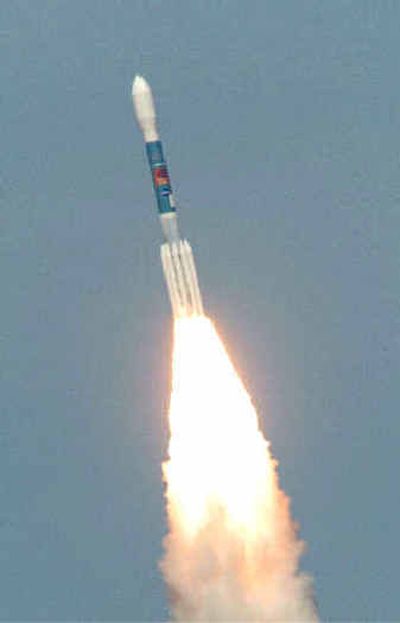Science probe finally ready to test theory

First they had to convince themselves that the idea was not ridiculous. Then they had to figure out how to do it. Then they had to invent the parts. Then they had to put them in space. And now, 40 years and $700 million later, they are just about ready to start.
Just about. NASA’s Gravity Probe B, perhaps the most exotic space science project ever attempted, was launched into orbit April 24, but a series of technical glitches has delayed the formal beginning of its experiments for a month from the planned inception. These hurdles now appear to have been overcome, and the science phase should kick off in a week.
“The honest answer is we thought we knew everything in advance, and some things weren’t as well planned as they should have been,” said C.W. Francis Everitt, the painfully honest Stanford University physicist who has midwifed Gravity Probe B since birth. “The amount of fiddling we’ve been doing has been amazing.”
Gravity Probe B proposes to prove two tenets of Albert Einstein’s Theory of General Relativity. The first, called “geodetic precession,” or the “geodetic effect,” holds that the gravity of large bodies such as Earth warps space and time near the body, much the way an iron ball lying on a rubber sheet stretches the sheet and causes nearby objects to roll toward it.
The second, known as “frame dragging,” theoretically occurs when the rotation of a large body “twists” nearby space and time. Think of a silk scarf spread out on the floor, put an iron ball on top of it and turn the iron ball, twisting the scarf.
Demonstrating these effects in the real universe, however, is harder, for the angular distortion in space-time caused by Earth is predicted to be microscopic: 6,614.4 milli-arcseconds per year for the geodetic effect; 40.9 milli-arcseconds per year for frame dragging. A milli-arcsecond is about 1/4,000,000 of a degree of arc.
If Einstein wasn’t right?
“Well, at this point people would be very surprised if it finds something seriously unexpected,” said Princeton University physicist Joseph Taylor. “In fact, it would be so surprising it probably wouldn’t be believed.”
The knock on Gravity Probe B is that theoretical physics, and some experiments, over the last 40 years have validated the two predictions to such a degree that time may have made the experiment moot.
“But the important point is that, in the end, our understanding of nature has to rest on experimental proofs, and that’s what this is,” Taylor said.